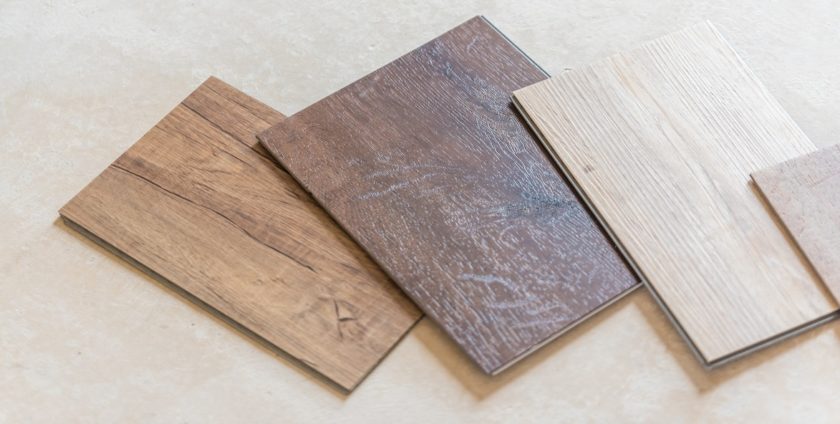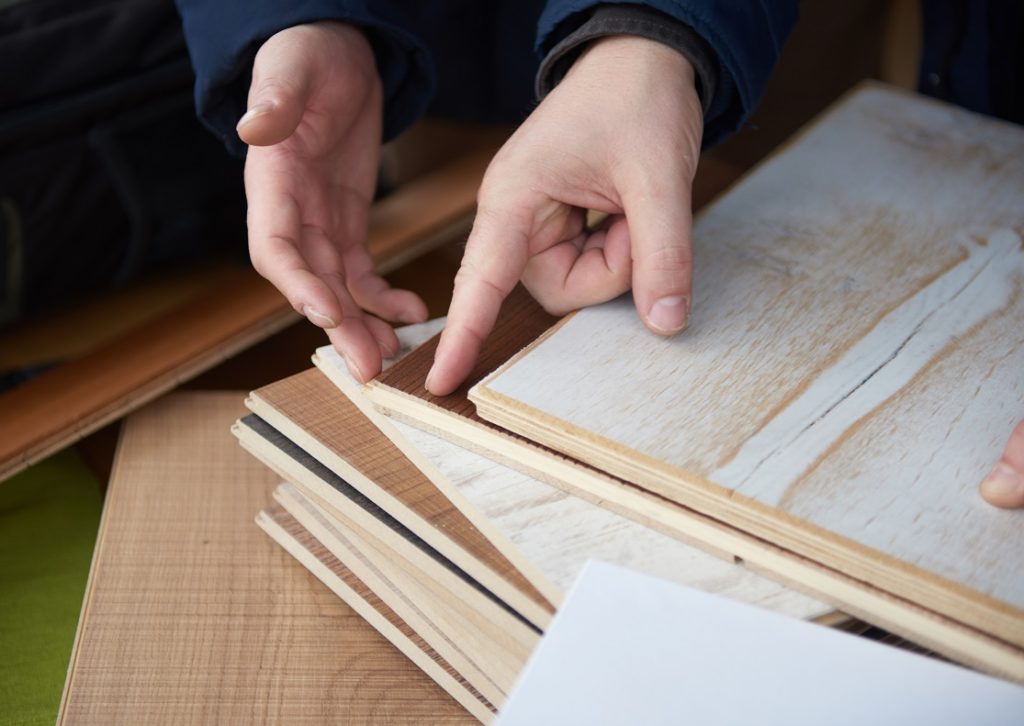Laminate Flooring vs. Engineered Hardwood

- Tags: cost, engineered hardwood, flooring, hardwood flooring, homebuyers, laminate flooring, VOCs
- Category: Blog
- 0 comment
You’ve just walked into someone’s house and admired their wood flooring, only to find out it’s laminate. “Wow, it looks like wood,” you say. Then you remembered hearing a while back that laminate is less expensive than hardwood, at which point you wonder, “If laminate flooring looks good and is cheaper, why would anyone still want hardwood?”
That is a completely legitimate question. Here is the answer.
What Actually Is Laminate Flooring?
First, let’s clarify what laminate actually is. Laminate is a multi-layer, synthetic flooring product fused together with a lamination process (hence the name). The top layer of laminate, or what you see when you think you’re looking at wood, is actually a photograph of wood layered under a clear protective coating. The inner core layer is usually composed of melamine resin and fiberboard materials. In other words, no actual wood.
Further, the layering process of high-pressure laminate requires coats of both adhesive and finishes which, if not specifically low formaldehyde (most aren’t), will really amp up the VOC (Volatile Organic Compound) factor. This means that the air quality in your home will take an unseen hit.
Let’s compare that to LIFECORE’s engineered hardwood, which is multiple layers of natural wood under a premium top layer of your chosen hardwood species (Oak, Acacia, Hickory, Maple, etc.). Each layer is “cross-grained” which means they run in perpendicular directions for more stability. The big bonus is that all of the components have ZERO-ADDed formaldehyde, which results in some of the lowest VOC flooring you will find in the marketplace.
Cost of Engineered Hardwood vs. Laminate Flooring
 Now that we’ve established that LIFECORE’s engineered hardwoods surpasses laminate with regard to air quality, stability, and overall realness, we should also address the misconception on pricing. Back in the day, when laminate was in its early stages, pricing per square foot was incredibly cheap. However, as the technology employed to give laminate the more realistic look and feel advanced, so has the price.
Now that we’ve established that LIFECORE’s engineered hardwoods surpasses laminate with regard to air quality, stability, and overall realness, we should also address the misconception on pricing. Back in the day, when laminate was in its early stages, pricing per square foot was incredibly cheap. However, as the technology employed to give laminate the more realistic look and feel advanced, so has the price.
A 2017 report showed that high-end laminate is the in the same price range as mid-level engineered hardwood, even though aesthetically, the high-end laminate cannot compete with the visuals of real wood. In other words, you’re paying more for a replica of something that you could have authentically at about the same price.
To further address cost, installation for both laminate and engineered wood flooring are virtually the same. Both flooring types can be installed on, above, or below grade.
Other Considerations for Laminate vs. Engineering Hardwood
So what’s left to consider when deciding whether to go laminate vs. engineered hardwood? Down the road, those who have done their research will appreciate that:
- Should they want to sell their home, the resale value will benefit more from having real wood flooring as opposed to laminate.In a study of homebuyer preferences by USA Today using data from National Association of Realtors found that 54% of homebuyers were willing to pay more for a home with hardwood flooring. And a majority of real estate agents surveyed by the National Wood Flooring Association said houses with hardwood flooring are easier to sell, sell for more money, and sell faster.
- Should you want to change the look of your flooring without replacing it, engineered hardwood can be sanded and refinished, whereas laminate can’t.
We know that your choice of LIFECORE’s engineered hardwood flooring will leave you thrilled with the authenticity, durability, versatility, and environmental credibility that you wouldn’t have gotten from laminate flooring. Plus, you’ve happily stayed within your budget. Now all you need is for someone to walk into your house and ask about your floors.
Leave a Reply
